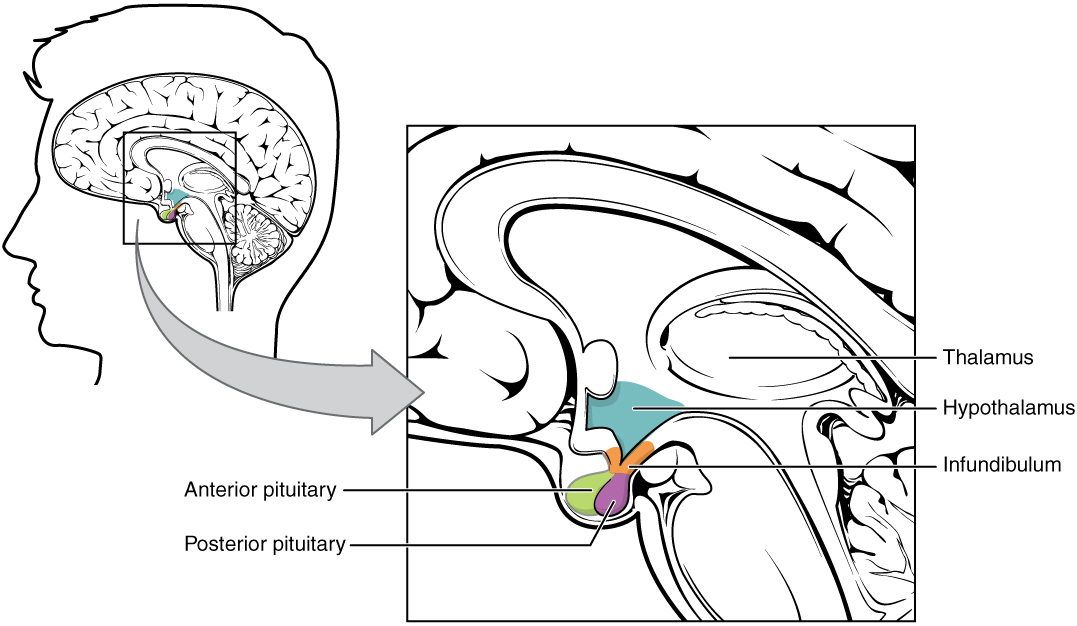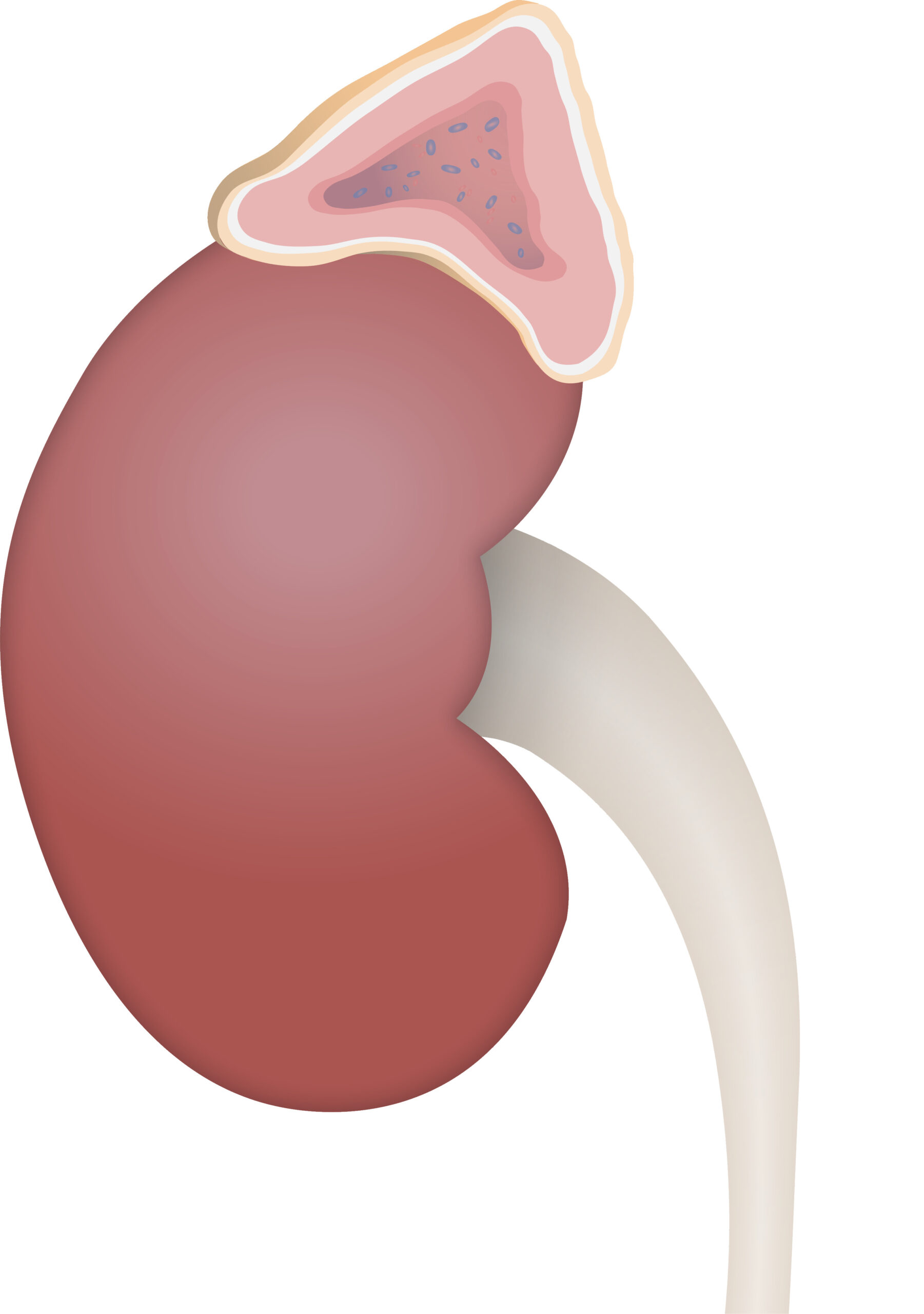Playlist
Show Playlist
Hide Playlist
Hypothalamic–Pituitary–Adrenal Cortex Axis
-
Slides Adrenal Endocrine System.pdf
-
Download Lecture Overview
00:00 Adrenal hormones. 00:02 There are four main ones we need to think about or classifications. 00:06 Aldosterone, androgen, cortisol and epinephrine. 00:10 We'll specifically discuss the adrenal cortex hormones different than the adrenal medulla hormones. 00:17 The adrenal cortex hormones involves the hypothalamic pituitary adrenal cortex axis. 00:25 So in the hypothalamus where we consider what's the most important, it's the paraventicular nucleus. 00:32 The paraventicular nucleus is what is going to release CRH. 00:36 That will then be released to the anterior pituitary to stimulate corticotropes. 00:43 These corticotropes will then release another hormone which is called ACTH. 00:54 How is this process regulated? The hypothalamus releases the hormones CRH, stimulating the anterior pituitary to release ACTH. 01:09 ACTH has some negative feedback capabilities on it's own. 01:14 It can feedback to the paraventicular nucleus and decrease CRH release. 01:20 The adrenal cortex hormones, such as cortisol will also have negative feedback components. 01:26 That will feedback both to the anterior pituitary to decrease ACTH as well as CRH from the hypothalamus. 01:37 So we have a multiple layered negative feedback system for adrenal cortex hormones. 01:43 Also we have a couple other stimulatory events. 01:50 Stresses such as physical stress, mental stress and even some biological stresses such as low glucose can feed into the system and drive it forward. 02:03 Meaning that despite negative feedback control, you can override this process by the stresses stimulating the release of CRH. 02:16 Which will increase the release of ACTH. 02:20 Which will then increase cortisol. 02:23 There are also lot of effects of biological rhythms. 02:27 And there are number of biological rhythms that we need to concern ourselves with. 02:32 There are those that last about a day which are circadian rhythms. 02:37 There are ones that are associated with longer cycle such as in growth and development. 02:43 Even some cycles that will last less than a day called ultradian rhythm. 02:47 But even if we think about a whole day response, circadian rhythm, there are sometimes in which cortisol release is higher than others, simply because of the time of day. 02:59 This biological rhythm needs to be taken into account when you are measuring cortisol levels in the blood. 03:05 You need to know at what point of the day you're in. 03:08 And you need to know if you are associate with a growth spurt or not, to know what a normal value looks like. 03:14 All of the cortex hormones, aldosterone is controlled a little bit differently. 03:23 Most all the other hormones are primarily controlled by ACTH. 03:29 Aldosterone though has a couple of additional regulatory factors. 03:35 It also is in impartial control by ACTH. 03:38 But aldosterone synthesis is also important. 03:42 So in this last step to from aldosterone, two other items are important. 03:49 The first is Ang II or Angiotensin II. 03:52 And that's stimulated through the renin angiostenin system. 03:56 So in response to something like low blood pressure or low blood volume sensed in the kidney, you have an up regulation and an increase in renin release. 04:06 This will increase angiotension II which stimulates this enzyme aldosterone synthase to produce more aldosterone. 04:16 Other item that becomes important is the level of potassium. 04:23 If you have high levels of potassium, it will also stimulate aldosterone synthase to convert in more aldosterone. 04:32 Low levels of potassium inhibit this enzyme. 04:36 So you can see here we have a number of extra regulatory steps for aldosterone that we don't have for other cortex hormones such as cortisol. 04:47 So what does aldosterone do that effects both of these two additional regulatory factors. 04:54 Well, aldosterone causes fluid retention. 04:57 And therefore, blood volume becomes important. 05:01 Aldosterone also causes potassium secretion and excretion. 05:07 Therefore, potassium becomes an important regulatory step, in its overall synthesis pathway. 05:13 The control of epinephrine is different than the other adrenal hormones. 05:22 So the cortex hormones were primarily regulated by what, ACTH and then aldosterone, by aldosterone synthesis. 05:31 Epinephrine is a medulla hormone which means it synthesizes in a little different spot. 05:38 It's primarily controlled by the sympathetic nervous system. 05:41 So let's go through the classic sympathetic nervous system. 05:45 And I'll use a compare and contrast approach to show you where there is a little bit different with producing epinephrine versus a normal nervous system response. 05:57 So in the sympathetic nervous system, you have a pre-gangilonic nerve fiber. 06:02 With synapse within a sympathetic chain ganglion, releasing the acetylcholine to bind to a nicotinic type II receptor. 06:12 This part is the same. 06:14 You'll have a similar neuron postganglionic fiber. 06:19 But now it will synapse in the adrenal medulla rather than a ganglion. 06:24 And it will directly simulate a chromatin cell. 06:28 The chromattin cell has the same nicotinic type II receptor. 06:32 Both of these acetylcholine responses are stimulatory. 06:37 If we go back to our traditional sympathetic nerve, What happens? You then stimulate a postganglionic fiber, that then travels releasing another neurotransmitter, norepinephrine in this case to bind to alpha and beta adrenergic receptors is on a target tissue. 06:57 The adrenal medulla is a little different. 07:02 Chromaffin cells will produce hormones primarily epinephrine, a little bit of norepinephrine, release it into the blood and then it travels through the blood to target tissues. 07:14 And the epinephrine, norepinephrine then can also bind to alpha and beta adrenergic receptors. 07:20 So it utilizes just a little different route to get to some of the same places.
About the Lecture
The lecture Hypothalamic–Pituitary–Adrenal Cortex Axis by Thad Wilson, PhD is from the course Endocrine Physiology.
Included Quiz Questions
Which of the following hypothalamic nuclei stimulates corticotropes?
- Paraventricular
- Arcuate
- Supraoptic
- Suprachiasmatic
- Ventromedial
What is the target tissue of ACTH?
- Adrenal cortex
- Anterior pituitary
- Posterior pituitary
- Kidney
- Lungs
Which of the following plasma conditions is a cortisol stimulant?
- Low glucose
- Low renin
- Low angiotensin
- Low aldosterone
- Aldosterone synthase activity
What receptor mediates or stimulates the release of hormones by the adrenal medulla?
- Nicotinic type-2 receptors
- Muscarinic type-2 receptors
- Alpha-adrenergic type-2 receptors
- Beta-adrenergic type-2 receptors
Customer reviews
5,0 of 5 stars
| 5 Stars |
|
5 |
| 4 Stars |
|
0 |
| 3 Stars |
|
0 |
| 2 Stars |
|
0 |
| 1 Star |
|
0 |







